The start of my journey into chicken keeping was from June 2012 when I had a flock of big girls followed by a mixed flock of big girls and bantams. From June 2014 I had a flock of eight bantams and all this can be found in “The history of my flock part one”. I then lost two girls in April and June 2015.
The flock of six seemed small and I decided to add two new girls to get back to a flock of eight. I decided at this point that I should start “The history of the flock part two” as the history was getting too long and also my chicken keeping had changed to keeping only bantams.
Topaz on the left is a gold laced wyndotte, Peaches eating the treat of fish is a brown leghorn as is Barley to her right, Honey in the foreground is a vorwerk and next to her on the right is Toffee a game bird and Emerald in the background on the right is also a game bird.
More information about each breed can be found in “Some information about my bantam breeds”.
On 28th July 2015 I bought home Butterscotch a gold top and Speckles an ancona. I have named all my girls with descriptive names and continued in the same vein with my two new girls.
I was very happy to have the flock back to eight lovely girls once more.
Butterscotch was never shy but Speckles was extremely nervous and for a long time she wouldn’t let me get near her. As time went on she got used to me and began to allow me to get really close to her.
After six months she suddenly started jumping on me every time I went through the gate. She would follow me around, get on eye level with me whenever she could and let me stroke her. She is the most changed girl I have had yet.
Peaches and Barley continue to jump on my back too so I now have three little girls jumping on me.
It is so lovely when my little girls want to interact with me like this. They are so much fun.
Another change to the flock
The egg laying started up again in February 2016 and hormones Started kicking in. Honey started having spats with some of the girls. Topaz didn’t start laying along with the rest of the flock which was very odd. In all my research I haven’t come across a young, healthy, hen that doesn’t lay.
Then the most dreaded behaviour started up again. Topaz started plucking feathers from the neck of Honey, Emerald and Toffee and from Butterscotch’s head and breast. Honey started following all the girls and pulling bottom feathers.
These were the same two girls that had been part of the flock when this happened before. I can’t imagine they can remember that time but there must be some instinct that has caused these same two girls to do this.
I couldn’t bare to have the flock plucked again and couldn’t risk it becoming a habit that could catch on with the rest of the flock because that would ruin the entire flock and I would never be able to add any new girls in the future.
I separated Honey and Topaz in the integration part of the run but they continued to pluck each other and that meant that the habit wouldn’t be broken.
In desperation I called the farmer who I had re homed Pepper and Dotty with as I knew she now had bantam pekins in her flock. I hadn’t finished explaining my dilemma when she offered to take them.
I felt very sad about this but once again I felt I had to do what was best for my flock.
Here is Honey, my oldest girl in her fourth year, with her neck starting to show the signs of plucking. I called her my “Honey Bunny” and was very attached to her. She would follow me around and chat to me.
Here is Topaz who was such a beautiful girl but a bit of a thug. She didn’t lay eggs and was a grumpy character and the only girl in the flock who would peck me if I tried to pick her up.
We took them to the farm on Sunday 3rd of April 2016. The farmer said she would keep them in the dog crate until dusk then put them in the barn. She would keep all the girls and her cockerel in the barn for a few days then let them all out in to the enclosed area in front of the barn for a week before letting them free range.
We visited them a week later and they looked settled in with her flock. My flock were also more settled with the two top girls gone. I decided to keep my flock at six from then on. Perhaps eight girls with two very feisty ones were too much for an enclosed run. I was now back to a happy flock of six and hoped that it would stay that way for a very long time.
Here we go again
We had had Butterscotch for a year when once again I had to make the painful decision to re home. She had been going broody as regular as clockwork. She would lay for three weeks then go broody for a week, take a week to start laying again and repeat the process. Each time she went broody she moulted some feathers.
During one broody spell she lost all of her head feathers including her crest and some feathers from her neck.
Once she started laying again she got pin feathers on her head. By the time she next went broody she almost had her head feathers back to normal. Once broody she lost all her head feathers again. This pattern kept repeating over the next seven months.
I couldn’t understand why she would keep moulting her head feathers every time she went broody. I started to wonder if something else was going on. Then at the point when she was almost feathered back to normal she went broody again and we had to go out that morning. We returned a few hours later to find that she had lost her head feathers again.
I realised that she must be getting plucked. I think that on the first day of being broody when she was just sitting she was having her head feathers pulled. The odd thing was that we hadn’t seen it happening. I suspected it was probably Barley as we had seen her pulling pins on occasions.
I realised that as she had had no head feathers for seven months she could end up with a bald head all the time as this would just keep on happening. This would not be fair on her and it couldn’t be good for her to keep being plucked.
I couldn’t separate Peaches and Barley, I had also had them much longer than Butterscotch and I couldn’t be completely sure it was Barley so the best thing seemed to be to re home Butterscotch where she could go broody in peace and could grow her head feathers back again. I talked to Moira at the farm where I have re homed my girls before and she was happy to take her so we took her to the farm on the 15th of August 2016.
Now we were down to a flock of five and all was calm and peaceful.
New girls
Our flock of five felt small and the time seemed right to add some new girls. I had visited a farm breeding seramas a year earlier and really loved them. I rang the farm to see if they had some and was lucky enough to have the last two as the farmer isn’t going to continue breeding them.
I continued with my descriptive theme for names and the little buff girl is Caramel and the grey one is Pebbles. They were one year old when they came to us on August 31st 2016. They both have silkie feathers.
Seramas are not only the smallest bantam breed but they are the smallest chickens in the world. These two are adorable and it is lovely to have a flock of seven girls which feels like a very good number for our space. They have fitted into the flock perfectly.
Two more new girls
Sadly Caramel died on 20th September 2016. We had only had her for three weeks. She had a swollen and closed eye and I took her to the vets who gave me an antibiotic and painkiller to administer to her beak and some eye drops.
I bought her indoors twice a day, in the cat box, to give her the meds and allow her to feed without competition. I bathed her and cared for her and grew really attached to her. She was a little fighter and continued to feed so I was hopeful for her.
One morning, after a week of treatment, her second eye was closed, swollen and weeping and she was having trouble breathing. I took her back to the vets and had to make the heartbreaking decision to have her put to sleep. She went quietly while I held her and cried buckets over her. I had grown so attached to her and it was really painful to have to let her go but I couldn’t let her suffer.
I didn’t want Pebbles to be the only tiny girl on her own in the flock so I set about searching for another breeder of seramas. I found someone an hours drive from us who had plenty of seramas for sale.
On 25th September 2016 we added Rusty and Freckles to the flock. They were four months old. Rusty has silkie feathers and Freckles has straight feathers.
They settled into the flock very quickly. They are really friendly, easy to handle and adorable. The flock is back to eight once more and the girls are all well settled together.
Sadly the flock is back down to six
We lost our first girl to old age on November 30th 2016. Toffee had been going into the chicken shed in the afternoons for a couple of weeks which I knew was a sign that she wasn’t well. That was soon followed by bright yellow poops which I researched and it said that it indicated a kidney problem.
She then stopped eating, refused treats and spent her mornings on a perch in the run and her afternoons in the chicken shed. She was getting weaker and I felt the kindest thing for her was to take her to the vets to be put to sleep.
I held her while she had her injection and the vet said that her delicate veins showed a drop in blood pressure and she agreed the bright yellow poop probably meant a kidney problem.
We were sad to lose Toffee as we have had her and Emerald the longest and she was a lovely character.
Toffee and Emerald came in together and spent a lot of time together. This is my favourite photograph of them.
Sadly soon after this Pebbles became ill. It started with her wheezing and I took her to the vets and gave her the antibiotic, baytril, for three weeks. She didn’t improve and was spending her days on her favourite perch dozing. I took her back to the vet and by then her right eye had swollen and was foaming.
These are the symptoms of mycoplasma and it became apparent that she had the same as Caramel. I couldn’t let her suffer like Caramel and I couldn’t risk the rest of the flock getting it too so I had to make the difficult decision to have her put to sleep. This was on Wednesday 7th December 2016.
I treated the rest of the flock for five days with Tylan in the water as a precaution and decided to let the flock settle until the spring before adding any more girls, while hoping that this was the end of a run of bad luck. Once more we had a flock of six.
We are now a flock of nine
I waited until we had passed the frosty weather and had warmer temperatures then added three more seramas on 25th February 2017.
We have Dandelion who has frizzle feathers, Apricot who has silkie feathers and Cinnamon who has straight feathers.
When we could no longer call them new girls we called them the three amigos as they always stick together.
Dandelion and Cinnamon are especially inseparable. Cinnamon is smaller than Freckles, our other straight feathered serama. Apricot was friendly right from the start with Dandelion and Cinnamon being more shy.
It took six weeks to fully integrate them because Rusty and Freckles were aggressive until the pecking order was established. Rusty is top serama followed by Freckles. We are now a flock of nine for the first time.
I hope they will remain a settled and stable flock for time to come.
Another change to the flock
Sadly I made the difficult decision to re-home Peaches and Barley with my friend Moira at Whitehouse Farm on 19th May 2017. The year before I had taken Butterscotch to her because she was being plucked by Peaches and Barley and I couldn’t bear to part with them as I had had them for longer and since they were six week old chicks. I thought removing the victim would end the problem
I was wrong and the next year they started plucking Speckles. They were plucking her head, neck, back and bottom and every time her pins started to come through they would pull them out again until her head and bottom were red.
They were also bullying the three amigos, especially Cinnamon. They were keeping them from the food and water and from the nest boxes and sometimes pinning Cinnamon to the ground and pulling feathers from her.
It couldn’t go on any longer and I talked to Moira about the problem. She had just rescued some girls and said to bring my two along and they could all settle in together.
I felt very sad to let them ago but they had had three years with us and I felt that they would probably be more suited to a free range life on the farm.
Once more we were a flock of seven and peace and harmony returned to the flock which made me think that I had made the right decision.
Sadly our flock is now six
We lost our sweet Rusty on 30th September 2017. She had had a prolapse in August and I took her to the vet to have it put back in. She didn’t lay for five weeks which we hoped would allow her to heal. She then laid five eggs in two weeks and then had a second prolapse.
I took her back to the vet and they put it back in and gave her a stitch to hold it in. Sadly she died in her sleep the following morning. We had only had her a year. She was such a joyful character and she will be very much missed.
Sadly another loss takes our flock down to five
We lost our lovely, sweet, Apricot on 9th April 2018. She was absolutely fine the day before with a red face and comb and running around as bright as a button. She had some mash and took spinach from my hand.
She went to roost next to Dandelion as usual. In the morning when I went into the run I noticed Apricot was missing. I thought that she may have gone into the chicken shed to lay her first egg of the year. When I opened the shed door I found her dead in front of her roost spot. It was an awful shock. She must have died soon after going in as there was no poop under her roost spot. I examined her and couldn’t see anything wrong. It is a mystery.
We had only had Apricot for a year and she was slightly less than a year and a half in age. She was a firm favourite as she was so sweet, so friendly and so pretty. She was our last silky feathered girl. I was so upset. She was such an entertaining, funny, little girl. She will be so missed.
I have decided to continue this story in a History of the flock part three

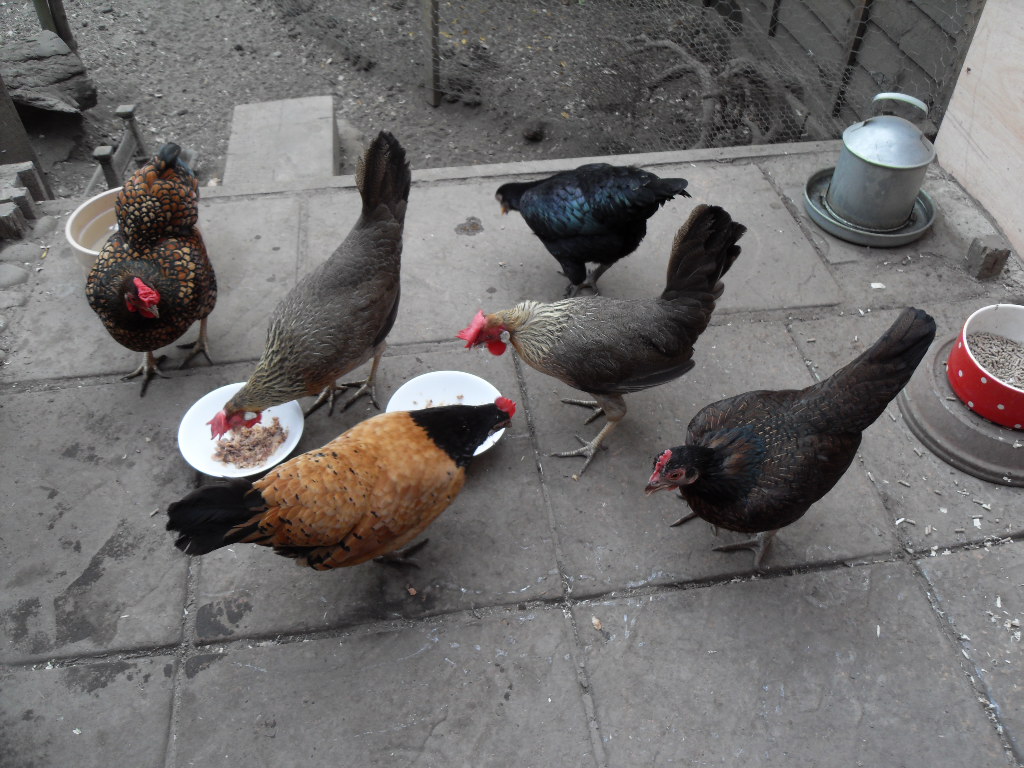
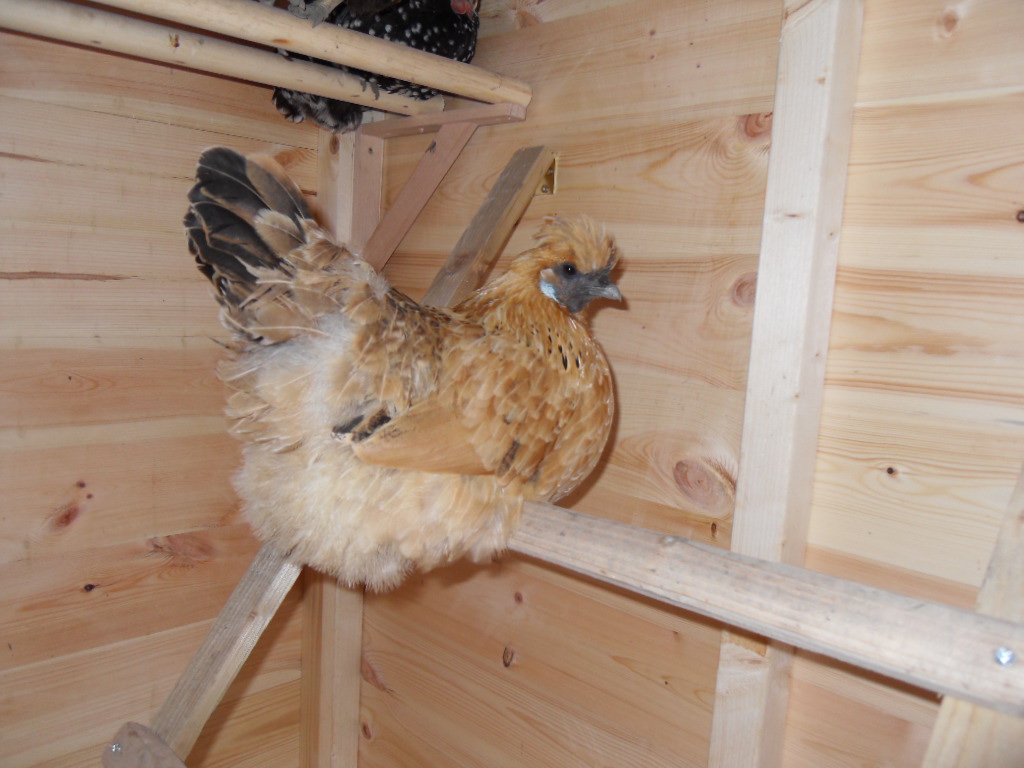
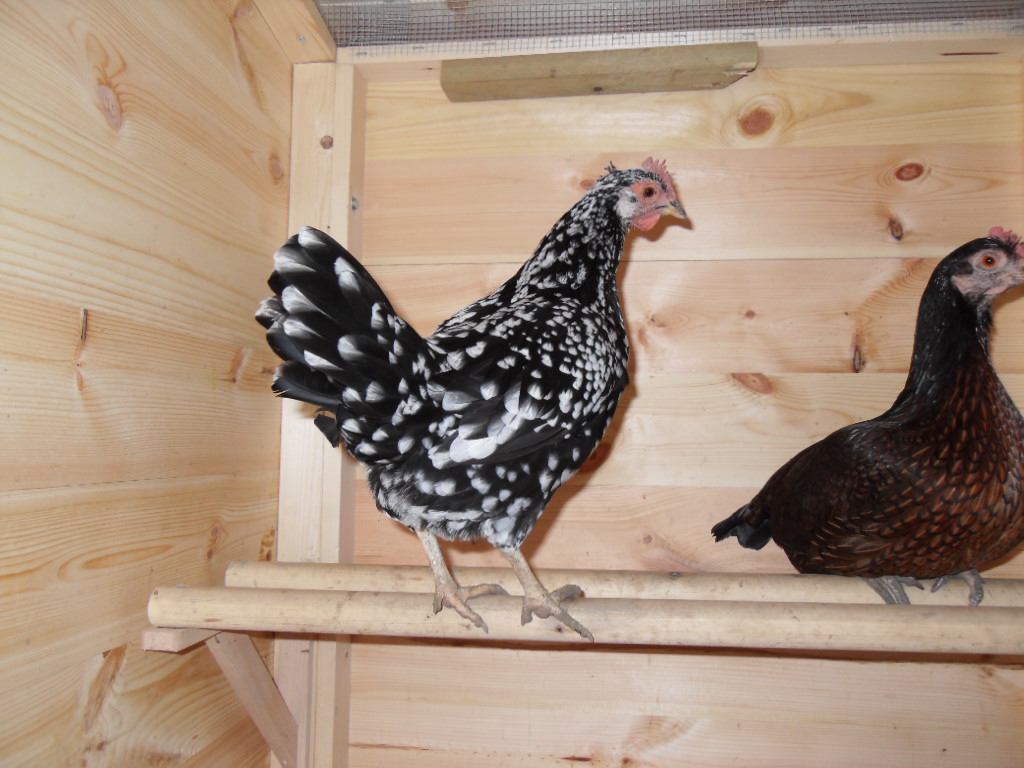
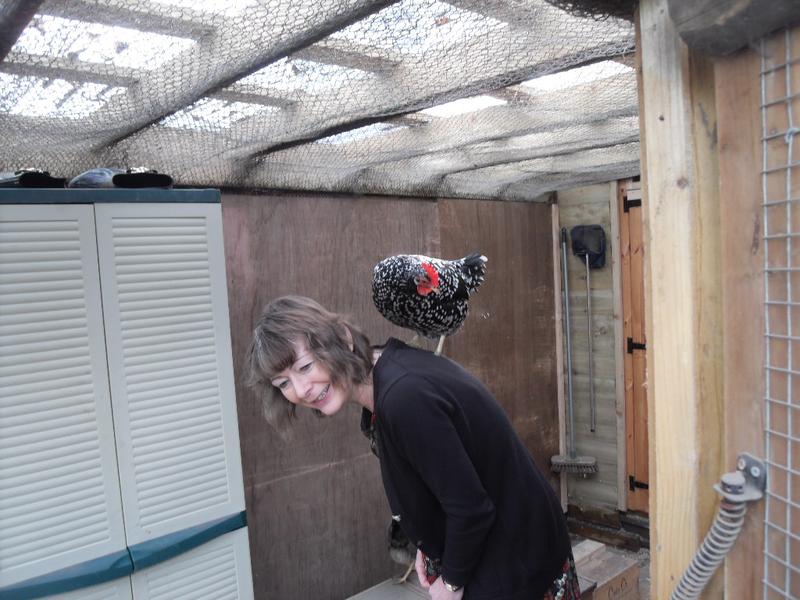
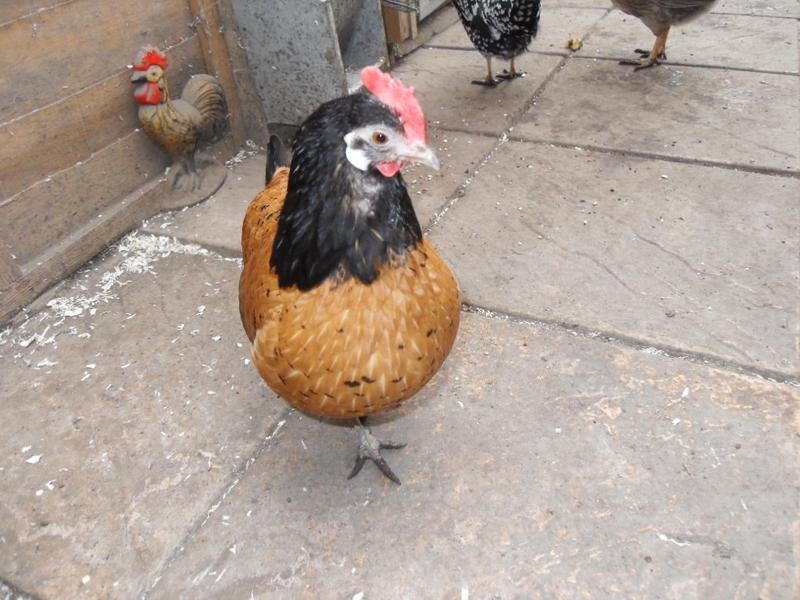
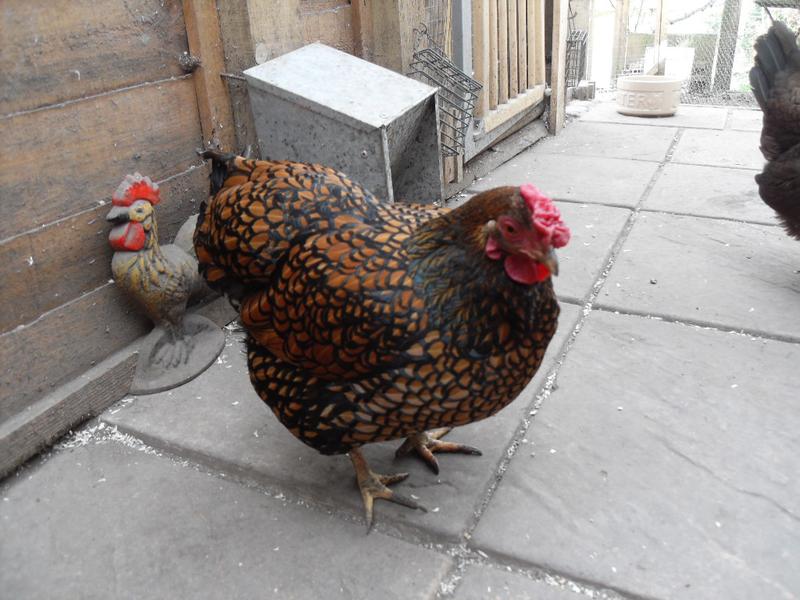
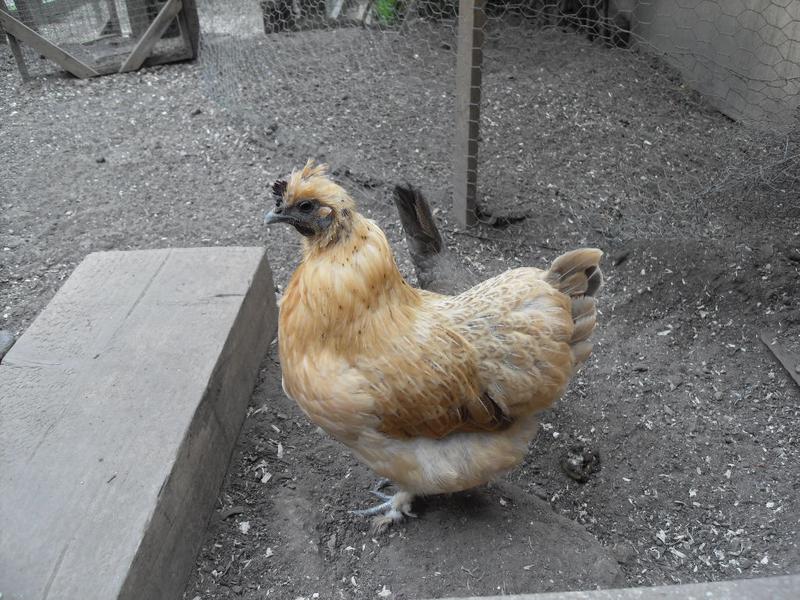
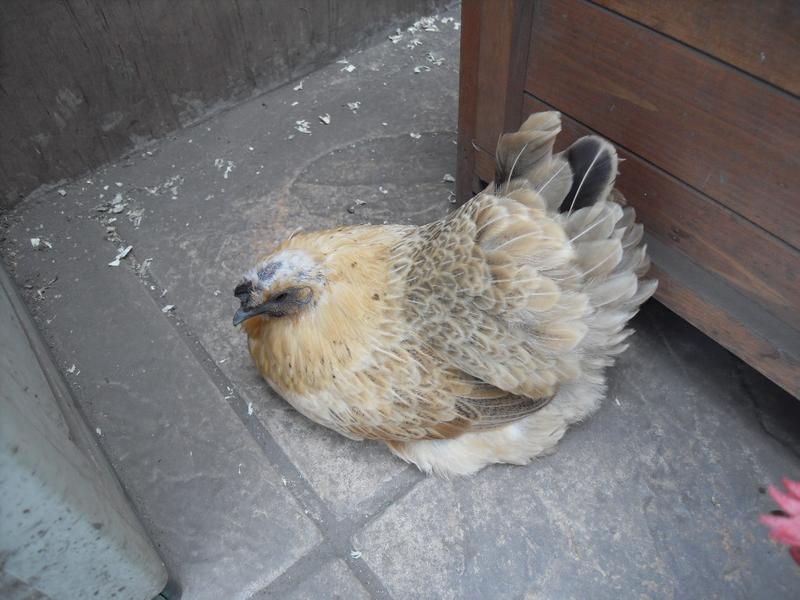
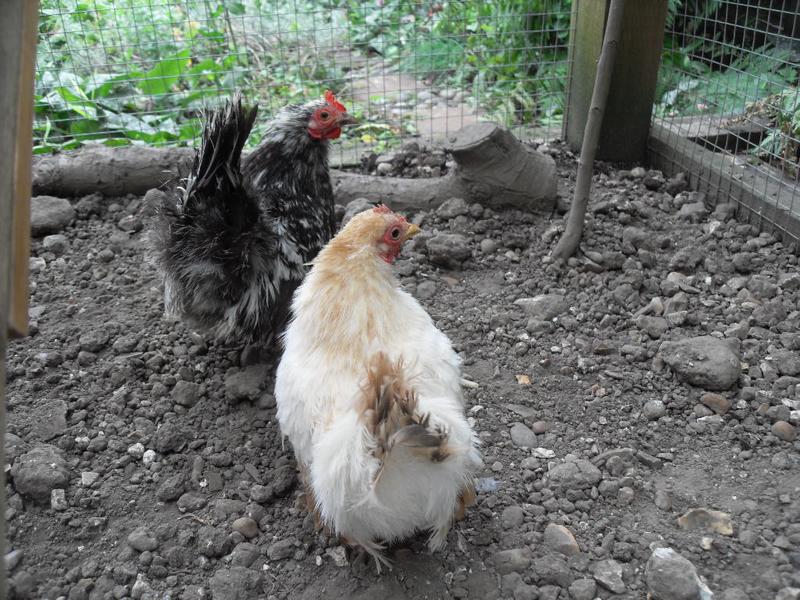
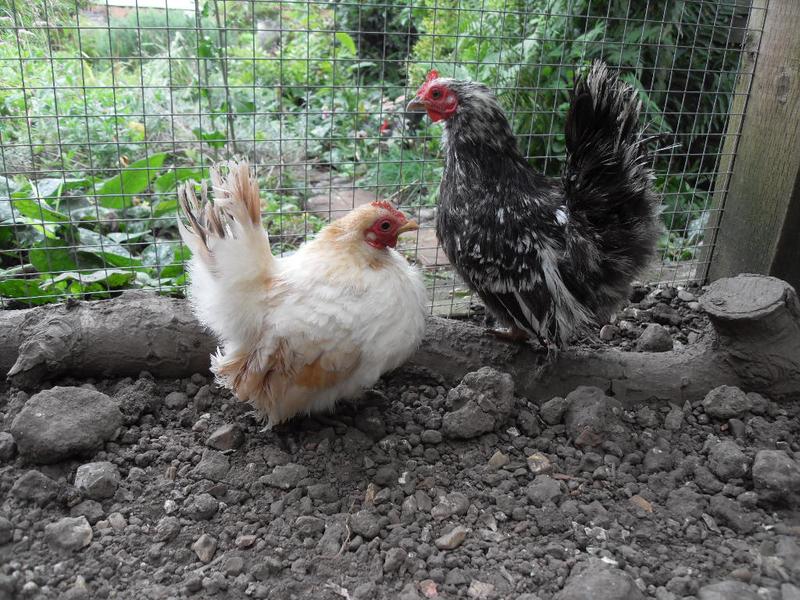
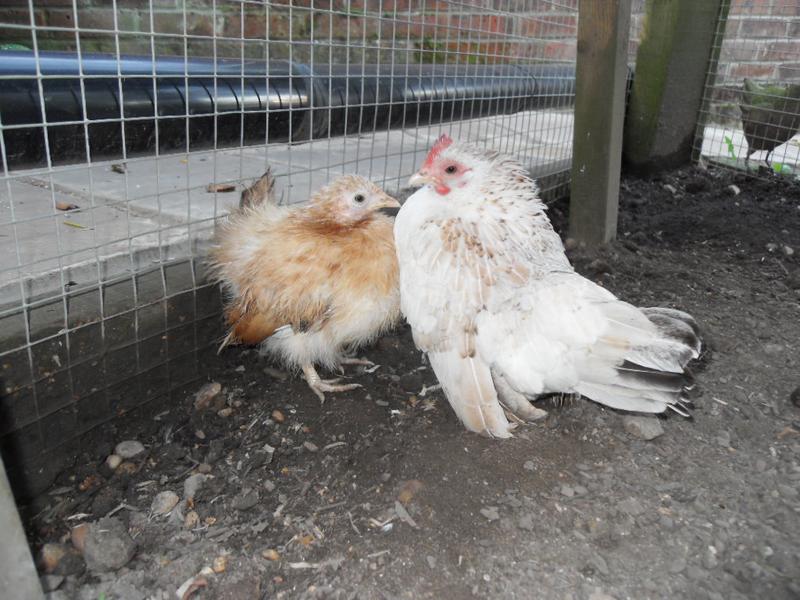
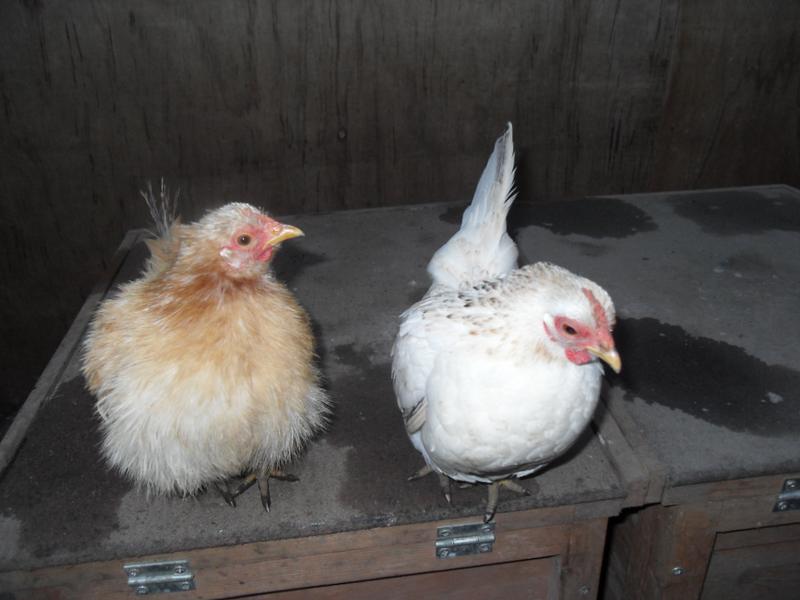
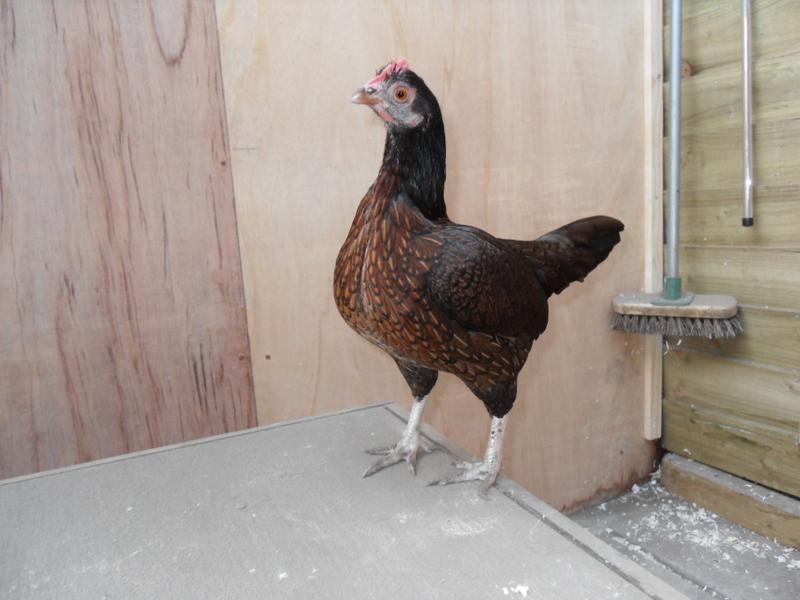
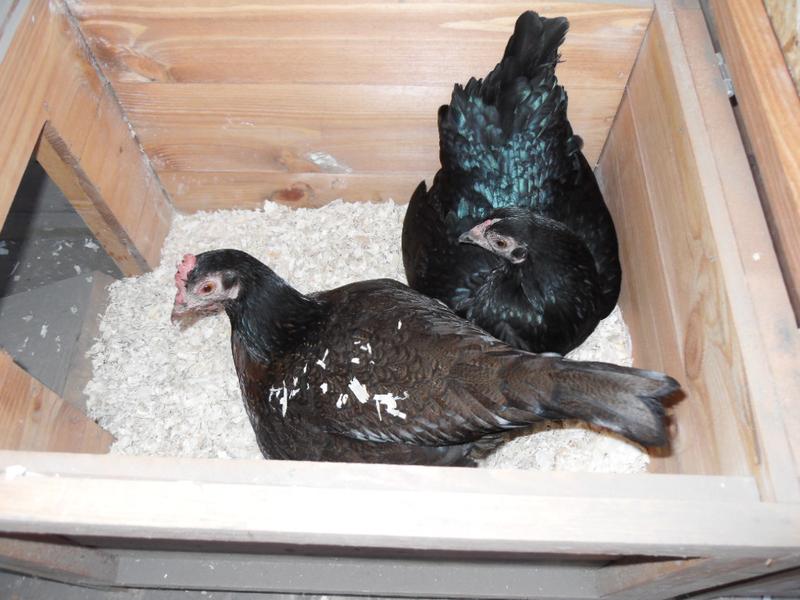
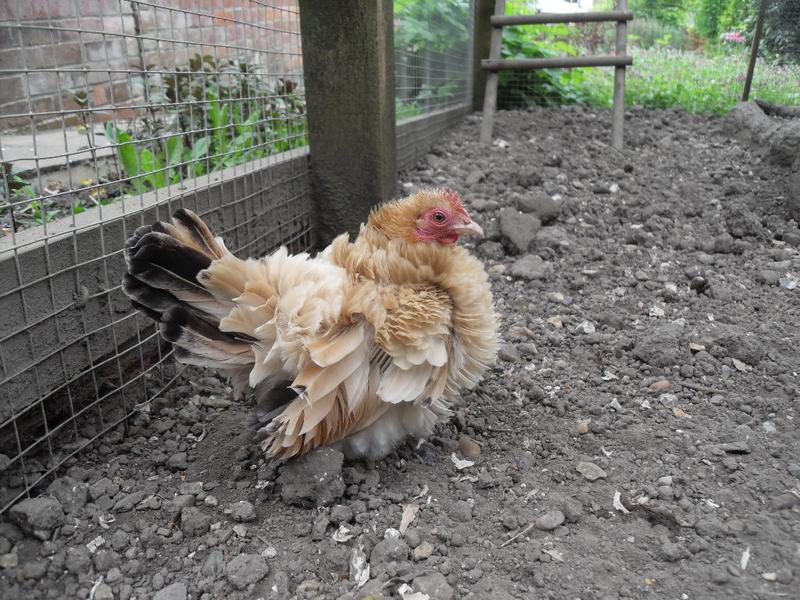
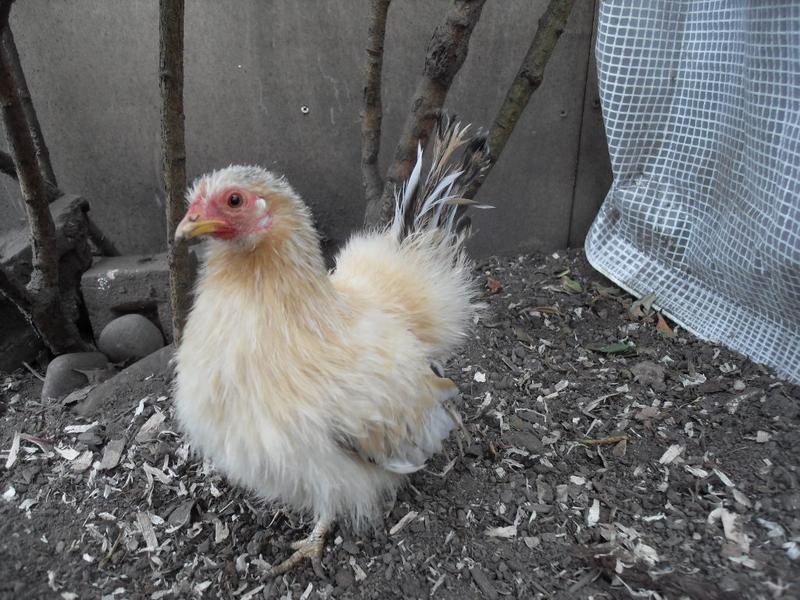
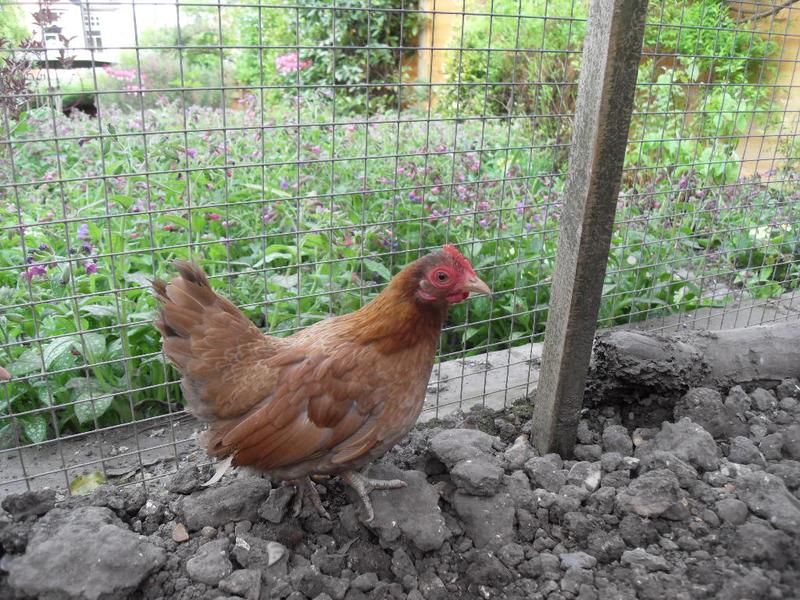
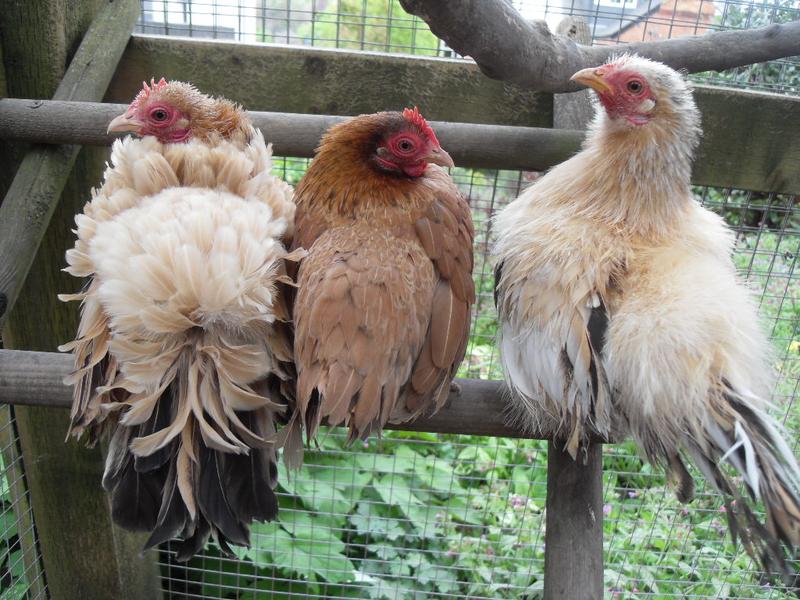
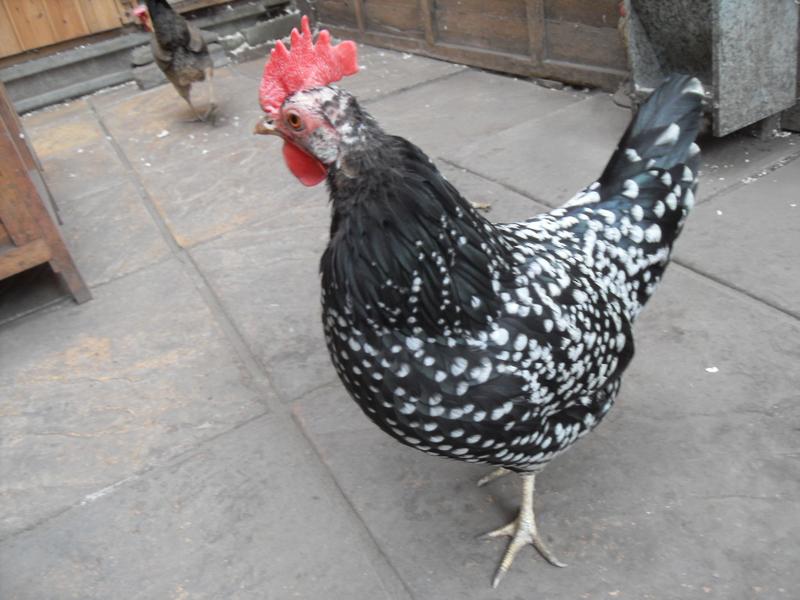
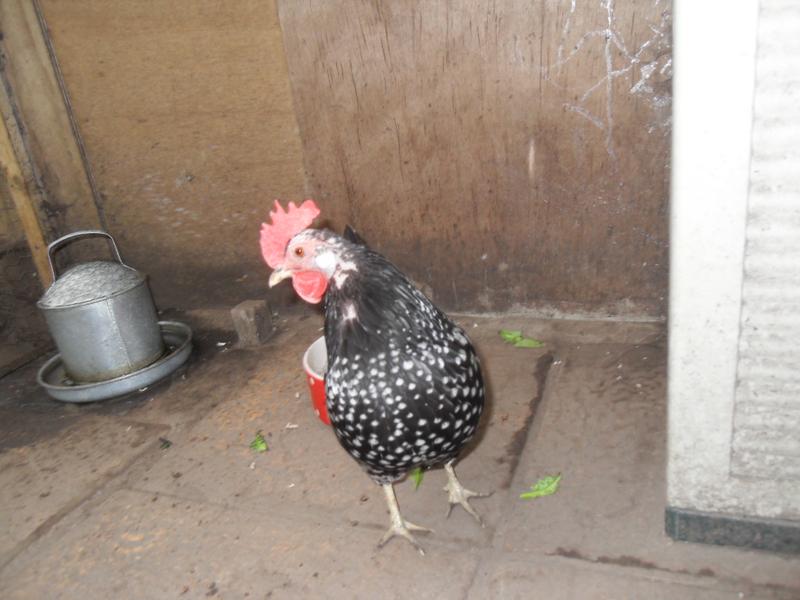
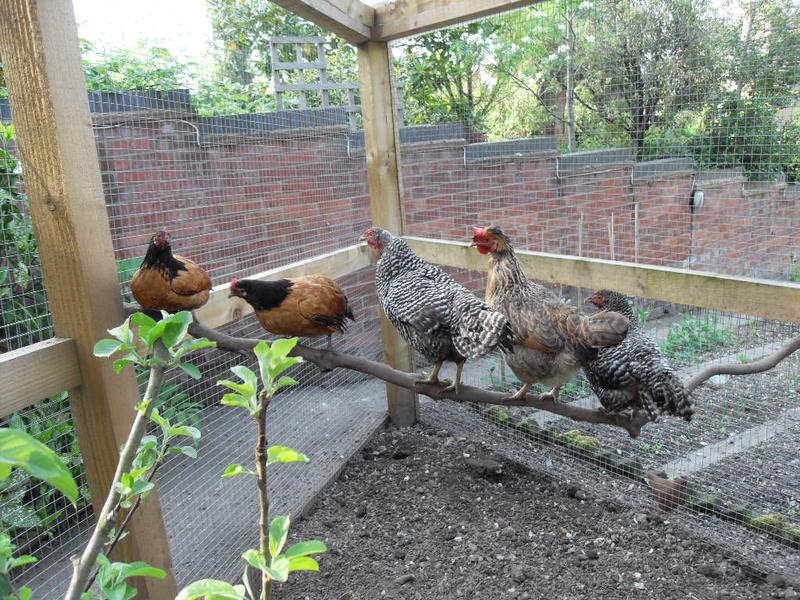 Click here to see the history of my flock.
Click here to see the history of my flock.
Hello Carol & Richard
Apologies but lost your (physical) address!
Brian x
Dear Carol,
I have really enjoyed reading about the adventures of your chickens. I know nothing about keeping chickens but it is something I would like to do in the future, perhaps.
Something occurs to me though; your coop area seems a bit dark and bare. Do the chickens get sunshine and green things to eat? perhaps they could eat more wild plants?
All good wishes,
Alison
Hi Alison, good to have you along. I have just looked at the history of the flock to remind myself what you are seeing and it doesn’t really show much of the run. We have a really large run with plenty of light and sunshine coming in. There are a few things growing but the girls stripped the lower parts and only the higher parts of the shrubs remain green. However I give the girls greens every day. They have spinach mid morning and during lock-down when I run out of fresh, between shopping, I give them frozen spinach ( defrosted the day before ) which they eat happily. I also give them any veg or salad bits we have over and in the summer they have greens from our garden veg plot and our allotment plot and the occasional turf which they love. I love spoiling my girls and I make sure they have healthy treats. They have lots of dust bathing and sun bathing areas as well as lots of branch perches and a couple of ladders.
Hi Carol,
Ah, that’s good. You certainly sound really kind and attentive.
What constitutes a treat? Would that be worms, etc.?
Treats come in many forms. Greens every day is a must. I dig the run over once a week and find worms for the girls. As soon as the girls see the fork they follow me and I have to be careful of where they are and watch them all the time that I dig. If I dig in the garden I also give them any worms I find. I like to give a bit of fruit in the afternoons, usually an apple for them to peck at. I give a little corn or sunflower hearts every day, about a teaspoon per girl. I give them fish in olive oil as an occasional treat (once every couple of months ) and also plain probiotic yogurt, again only every few months and only about a teaspoon per girl. It’s good for their digestion in small doses. The treat they can have any time is mash. This is their pellets with water so it makes a porridge. They love the different texture from dry pellets but it has the advantage of getting them to eat what they are supposed to eat but they see it as a treat. They also go mad for dandelion leaves which are really good for them and I grow them alongside their run ( we call it the chicken’s strip ) especially for them.